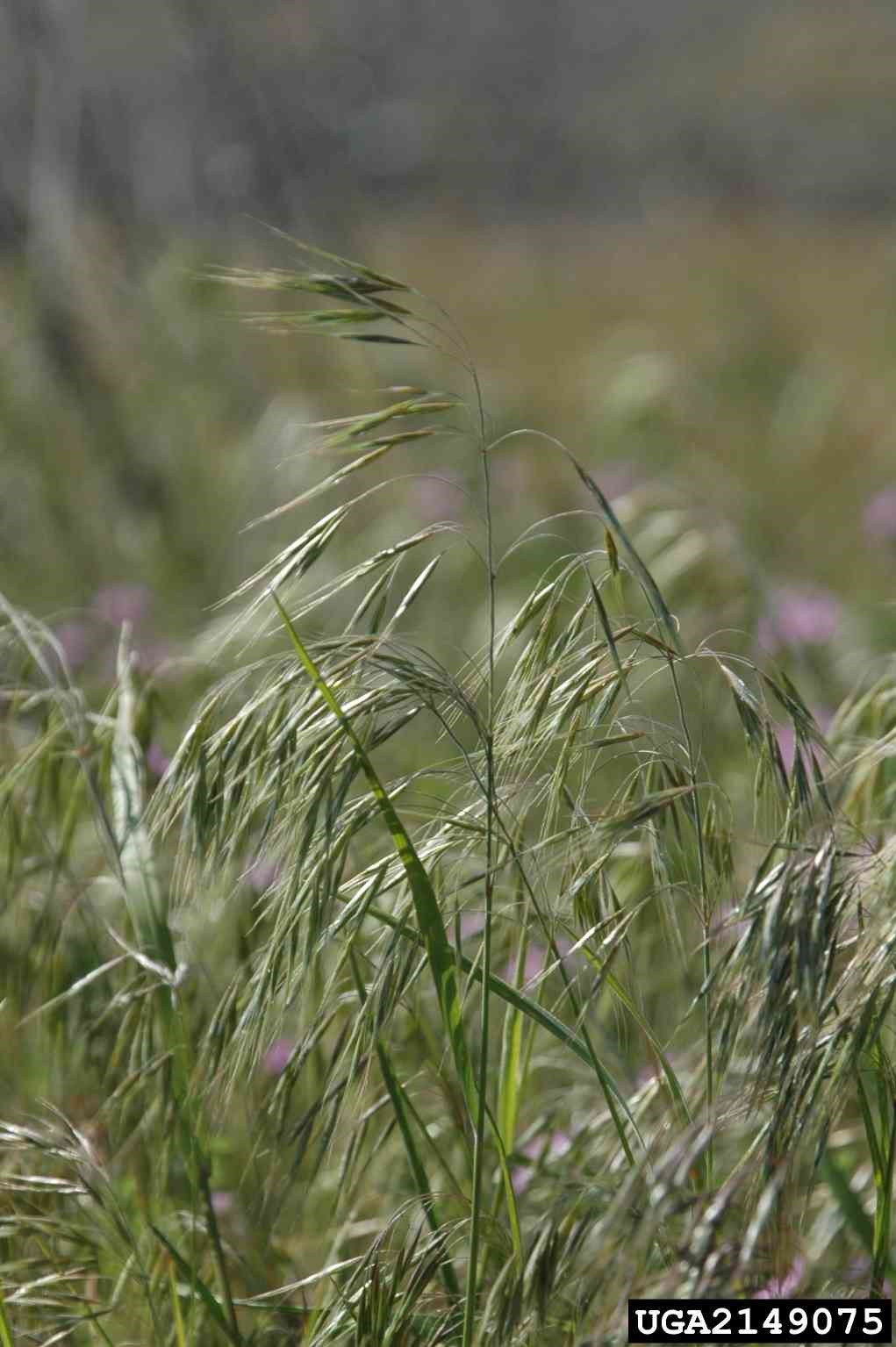Adaptation
Cheatgrass has many ways that it has adapted
over the course of its invasion! We will look at several of them,
but I am sure I did not catch them all.

Invasion
One of the adaptations is believed to be the ability of the grass to
crossbreed. Being able to do this allows for the plant to adapt to
different environments and in turn increases its range of invasion.
Unfortunately for the plant, due to its self-pollination, it has
high levels of inbreeding (Zouhar 2003). Another adaptation this
plant has developed is the ability to produce in a vast array of
climates and also stay dormant in the soil for two to three years,
but could be more than five years. Bromus tectorum can survive in
warm, cold, wet, and dry conditions. It has been found in places
from salt-desert shrub communities to coniferous forests. It is
believed that the habitat is a main contributor in the adaptive
genetic variation that we see around the world (Zouhar 2003).
However, Cheatgrass is more likely to invade areas that have the
same climate as Eurasia, its native habitat (Forest and Range 2006).
Root System
This invasive species has also developed a rapid growing root system
that rapidly occupies underground space and competes with other
species’ roots for resources (Zouhar 2003 and Liu 2013). Like most
grasses, the roots of Bromus tectorum are fibrous and provide
support for holding the plant up in the soil (Forest and Range
2006). This root system also helps decrease the amount of erosion
that is happening to the surrounding land (Forest and Range 2006).
The roots of this grass are typically made up of seven main roots
that divide quickly in all directions (Zouhar 2003). The roots are
usually more concentrated in the top twelve inches of soil, but they
have the capability of penetrating up to sixty inches or more
(Zouhar 2003).
Temperatures
To show how adaptive they are let’s look at what temperatures they
can survive in. Cheatgrass is an annual winter plant, so with its
fall germination and winter growth it has to be able to withstand
some pretty cold temperatures. The timing of its reproduction is
controlled by the short lived seed banks that B. tectorum has (Dyer,
Hardison, and Rice 2011). Even with its short lived seed bank
though, the plant manages to grow through freezing temperatures. The
roots of Cheatgrass continue to grow at thirty-seven degrees Fahrenheit
(Zouhar 2003), while roots of other plants, such as bluebunch
wheatgrass, that are in the same area as B. tectorum remain dormant
until temperatures closer to fifty degrees Fahrenheit (Zouhar 2003).
This adaptation to climate allows Cheatgrass to take over. However,
this invasive organism cannot with stand everything; it has a weak
point once temperatures reach closer to ninety degrees Fahrenheit
(Zouhar 2003).

Traveling
This invasive species moves around and gets to other places to
invade in many ways. A large quantity of seeds is produced during
the plants growing time, winter. After the seeds are produced they
can be spread short or long distances. Wind and water do not help
the seed travel far, but they move it enough to help the plant take
over. To travel longer distances, B. tectorum has adapted and
developed barbed florets. These florets make the seeds easy to be
picked up by humans or domestic or wild animals by catching and
sticking to clothing, feathers, or fur (Zouhar 2003). There is also
a possibility that vehicles or machines are kicking up some seeds
and taking them with them or the possibility of it being stored in a
farmer’s barn in dry bales of straw or hay (Zouhar 2003).
Invasion
In 1966, Cheatgrass was confined to higher elevations; since then,
it has adapted and is now found in lower elevations too (Zouhar
2003). Its fastest invasion occurred after a herd of cattle was
introduced to the fields where it was growing and were left to roam
and graze the lands. What this did was push out the native plants
that could not keep up with the heavy grazing, which allowed B.
tectorum to take over (Zouhar 2003). When this grass takes over,
there is a huge increase for the likelihood of fires (Zouhar 2003).
As of now, people say that after the first fire occurs it only takes
three to six years for the fuels from Cheatgrass to build up and
cause a second fire. This fuel comes from the seed banks and buildup
of dry material (Zouhar 2003). It is then easily ignited when the
conditions of weather and wind are just right. As more and more
fires occur, the native species that initially inhabit the area no
longer do because they cannot adapt fast enough to keep up with the
blazing flames. Cheatgrass tends to dominate in areas that have
experienced a recent fire and once it had claimed its new territory
the chances of wildfires just continue to rise (Zouhar 2003).
This adaptation to and promotion of frequent fires is what gives
Cheatgrass its greatest advantage against other competitors (Zouhar
2003).